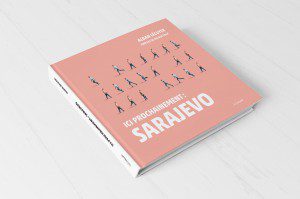Coming Soon: Sarajevo
Why Sarajevo?
I want to see a place where people can get along in harmony.
Jean-Luc Godard, Notre musique
The siege of Sarajevo (1992-1996) has been described as urbicide and was based on a determination to destroy the town culturally. By firstly targeting neighborhood and meeting places, the Serbian artillery deliberately attacked the foundations of urban identity in the Bosnian capital. It was a war against architecture and verticality, against collective housing and diversity, against a unique cohabitation between Bosnian Muslims, Orthodox Serbs and Croatian Catholics.
Twenty years on, Sarajevo embodies the issues of contemporary cities with a remarkable intensity: how does one fit into a society deeply marked by fragmentation (into distinct neighborhoods, into ethnic, religious and social groups)? How does one look to the future in a city experiencing great change?
Coming Soon: Sarajevo portrays the city’s slow metamorphosis by extrapolating on the visual vocabulary of architecture: 3D modeling, stock images, projected views, etc. This language, which is traditionally used in the future tense, questions the singular place that Sarajevo holds in the present, somewhere between a vague nostalgia for ex-Yugoslavia and the dreams of a Europe that seems to be slipping away, between the ghosts of a war captured in news photos and the immaculate iconography of architectural projection.
By exploring the gap between the reality of the city, and its idealized depictions, Coming Soon: Sarajevo shows the role of history in the ideal plastered on construction site hoardings.


























